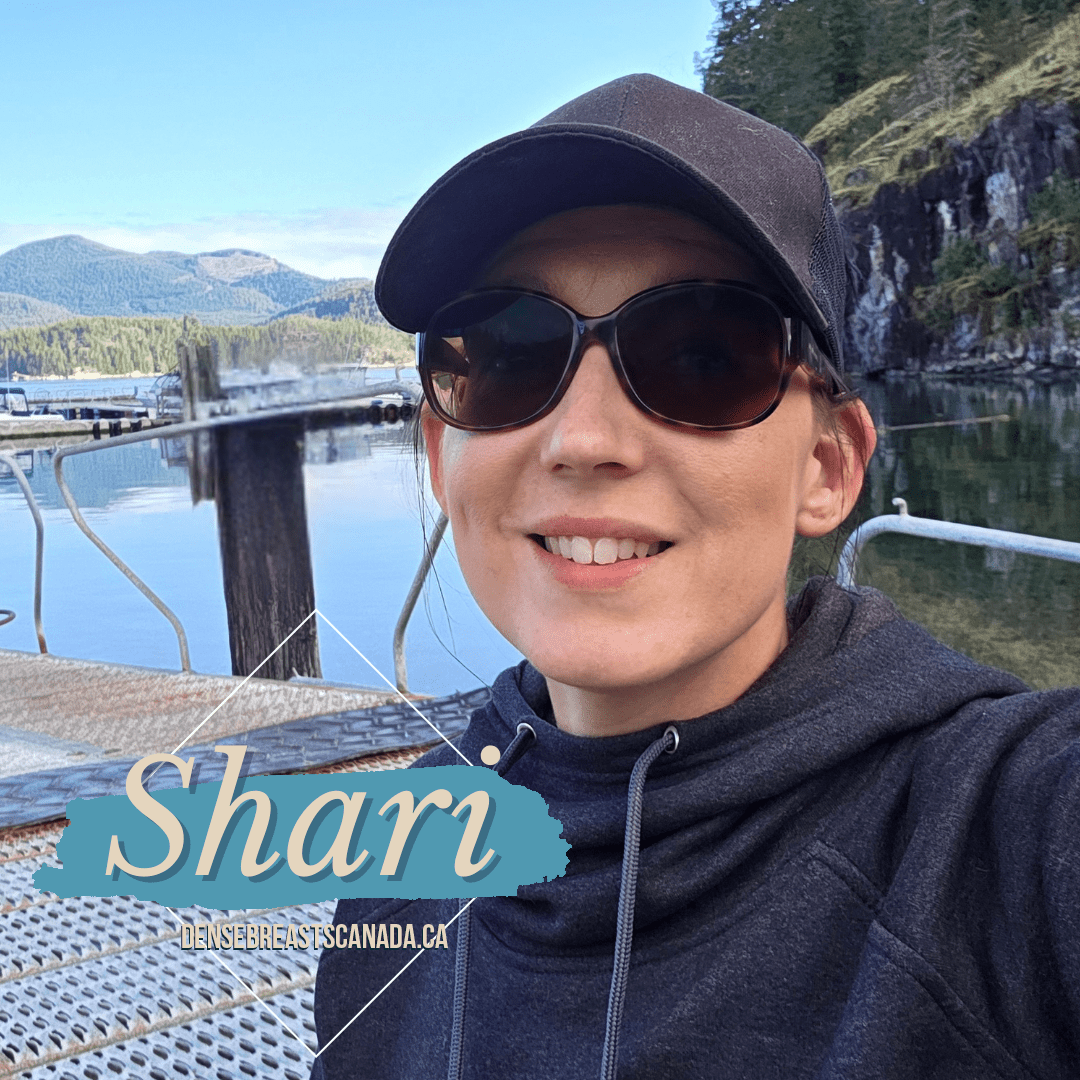Shari

My first brush with breast cancer was when I was 11 years old and my mother was diagnosed at the age of 39 after finding a lump. She was treated with a partial mastectomy and radiation therapy. Thirteen years later she passed away at the age of 52 while I was in my first term of school to become an xray technologist.
When I graduated, I landed in a full-time mammography and x-ray job. I had never had any intentions of becoming a mammographer and was asked often by my patients how I ended up in that line of work. I would tell them the story of my mom, saying perhaps she had a hand in me ending up there.
I had my first mammogram when I was 32. It was then that I discovered that I had dense breast tissue. The radiologist that read my mammo told me to make sure I was doing my self-exams. I had another mammogram a couple of years later, and then pursued genetic testing. I was told I wasn’t eligible because my mom’s breast cancer was estrogen receptor positive and not likely to be one of the cancers caused by a genetic mutation. I felt reassured by this information and backed off on my requests for routine screening mammography. After about three and a half years of no imaging I met a patient at work that made me think “I should really have another mammogram”. I was feeling no changes, and had no concerns, but thought it was time. My mammogram was normal. In the time since my last mammogram, supplementary breast screening ultrasound had become available in BC. My radiologist reported that I should have a screening breast ultrasound based on my breast density (category C) and my family history.
I had my screening breast ultrasound and was given a same day biopsy of a 6 mm BI-RADS 4B lesion. The radiologist doing the biopsy told me that I had a 50/50 chance that it was a breast cancer, but that it was acting more like a benign fibroadenoma. A week later, at the age of 38, I found out I had Invasive Ductal Carcinoma in my left breast.
It was about 2 months between my diagnosis and my surgery. During that time I continued to work in what felt a little like the twilight zone. I spent my days helping patients that worried about the possibility that they had breast cancer, knowing that I had it myself.
I elected to have both breasts removed, and because it was caught so early (none of my doctors could feel it either) I was able to have direct to implant reconstruction. My cancer was node negative and surgery was the only treatment recommended for me. Even though my cancer was estrogen receptor positive, the slight benefit to taking Tamoxifen after removing both breasts did not outweigh the risks to having a bad side effect from the drug, so I elected to not to take it. This decision was supported by my Oncologist.
Because I was diagnosed under the age of 40, I was asked if I wanted to take part in the Ruby study. Part of that study was testing for genetic mutations. That study tested me for around 20 different genetic mutations that could have increased my chance of breast cancer. The study also recommended that I go through the provincial hereditary cancer screening as they said that they would probably test for more mutations. They were right, and I was tested for 54 genetic mutations through the BC Hereditary Cancer program. I was convinced that I would be a carrier. My mom and I had the same type of breast cancer in the same area of the same breast diagnosed at practically the same age. I was negative for everything they tested me for.
I am so grateful to the work DBC has done to help make supplemental screening available to women with dense breast tissue. Who knows what my outcome would have been if my breast cancer was not caught when it was. I am now happy and healthy and just celebrated the 4 year anniversary of my surgery. I am able to share my story and experiences with patients that may be about to embark on their own journey with breast cancer. I encourage everyone to take advantage of the screening tests that are available to them. Don’t wait until it’s too late!
